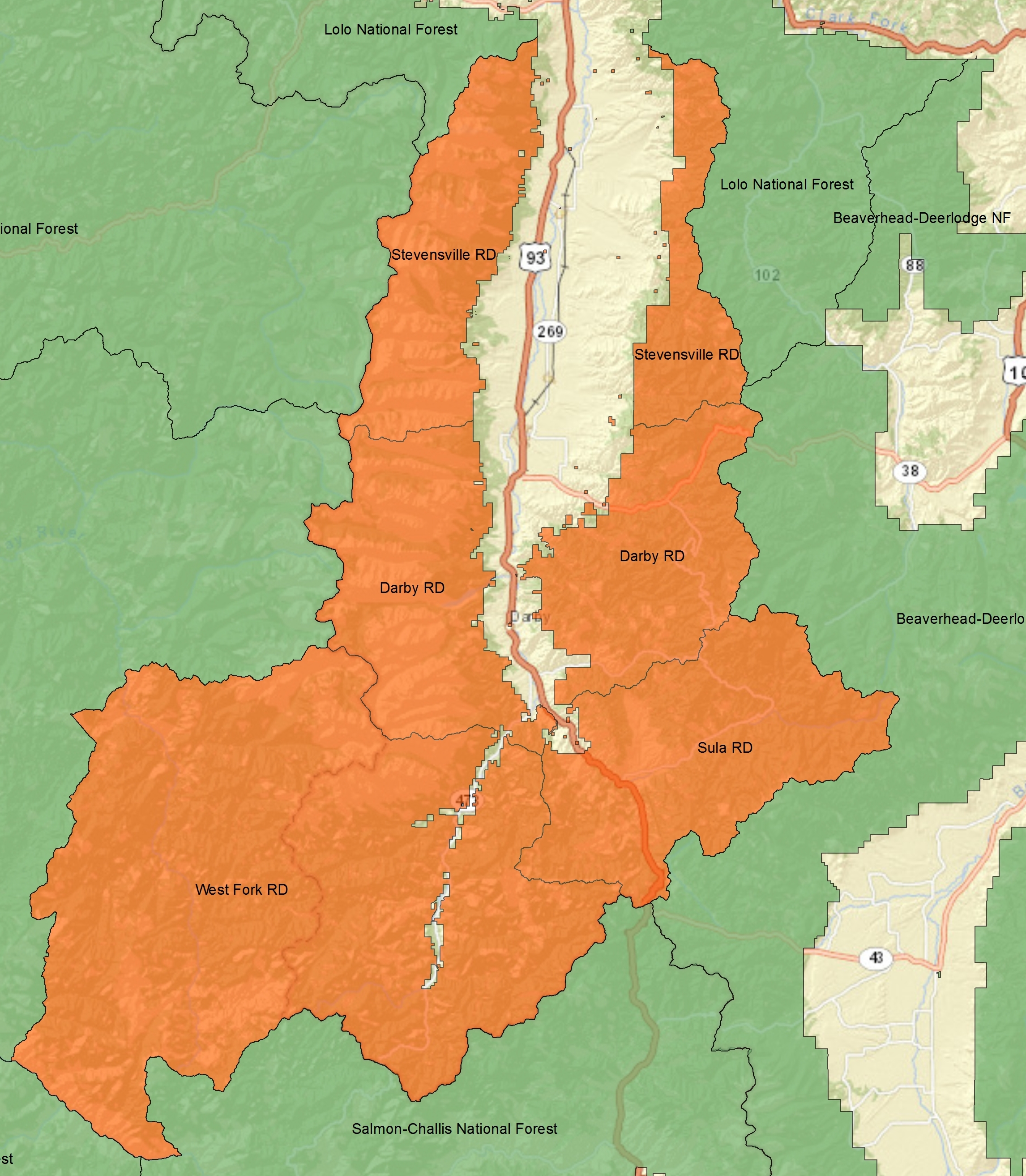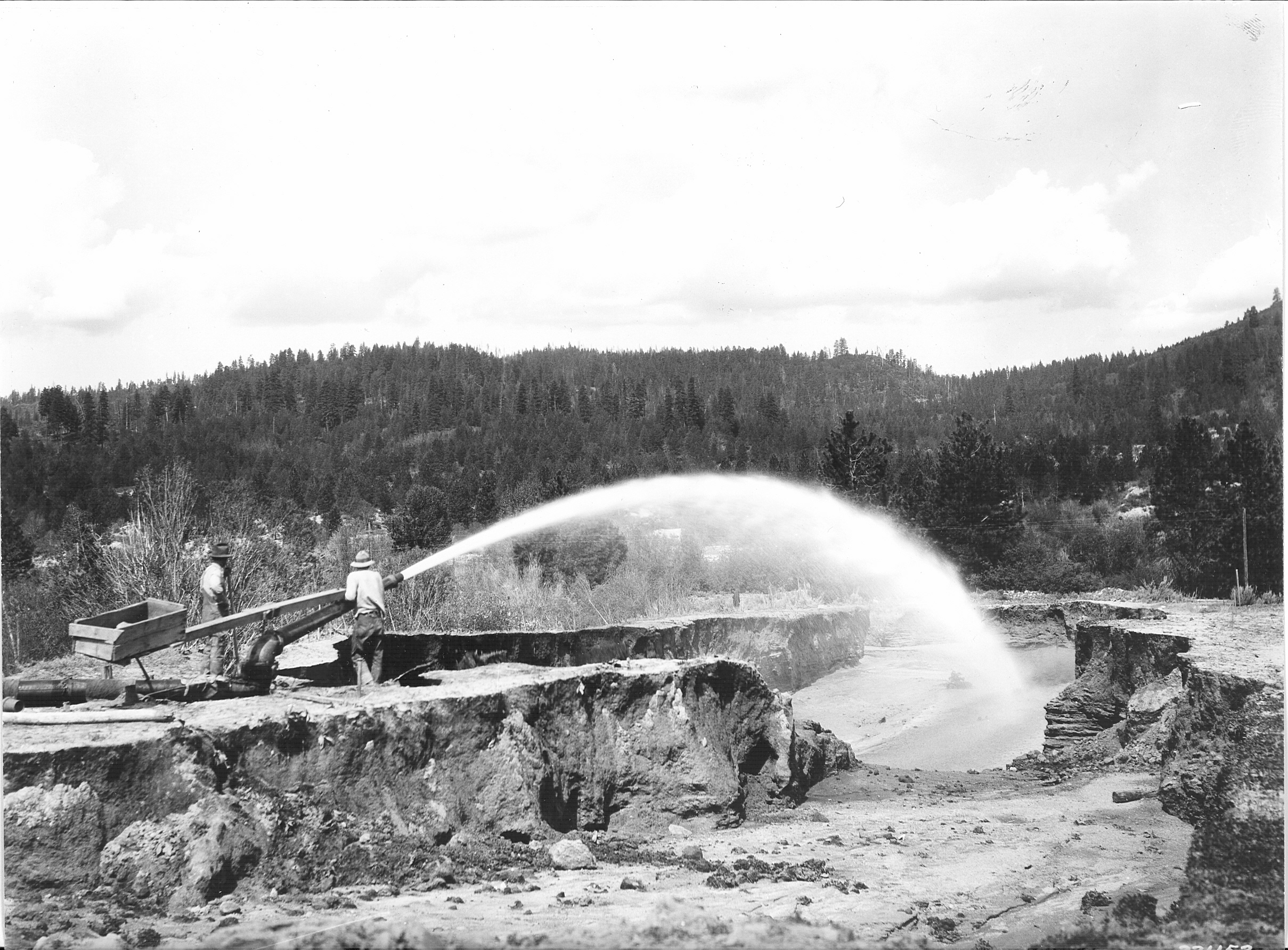|
Frank Church–River Of No Return Wilderness
The Frank Church—River of No Return Wilderness Area is a protected wilderness area in Idaho. It was created in 1980 by the United States Congress and renamed in 1984 as the ''Frank Church-River of No Return Wilderness Area'' in honor of U.S. Senator Frank Church. At , it is the largest contiguous federally managed wilderness in the United States outside of Alaska. The Death Valley Wilderness is the largest single designated area but consists of numerous disconnected units. The wilderness protects several mountain ranges, extensive wildlife, and a popular whitewater rafting river: the Salmon River. Description Together with the adjacent Gospel Hump Wilderness and surrounding unprotected roadless Forest Service land, it is the core of a 3.3 million acre (13,000 km2) roadless area. It is separated from the Selway-Bitterroot Wilderness, to the north, by a single dirt road (the Magruder Corridor). The wilderness contains parts of several mountain ranges, including th ... [...More Info...] [...Related Items...] OR: [Wikipedia] [Google] [Baidu] |
Idaho County, Idaho
Idaho County is a county in the U.S. state of Idaho, and the largest by area in the state. As of the 2020 census, the population was 16,541. The county seat is Grangeville. Previous county seats of the area were Florence (1864–68), Washington (1868–75), and Mount Idaho (1875–1902). History Idaho County's oldest non-native settlements are ghost towns. Discovery of gold occurred in succession at Elk City, Newsome, and Florence during the spring and summer of 1861. At the time, all of the settlements were within Shoshone County, Washington Territory. Thousands flocked to Florence. As a result, Idaho County was founded as a region of Washington Territory in 1861, named for a steamer called ''Idaho'' that was launched on the Columbia River in 1860. It was reorganized by the Idaho Territorial Legislature on February 4, 1864. In this context, the Idaho Territory and the State of Idaho are both preceded by the county name. Settlements at Cottonwood, Mount Idaho, and Warre ... [...More Info...] [...Related Items...] OR: [Wikipedia] [Google] [Baidu] |
Nez Perce National Forest
The Nez Perce National Forest is a United States National Forest located in west-central Idaho. The forest is bounded on the east by the state of Montana, on the north by the Clearwater National Forest, on the west by a portion of the Wallowa–Whitman National Forest and on the south by the Payette National Forest. The mountains in this forest provide wildlife habitat for timber wolf, raccoon, moose, black bear, coyote, cougar, elk, two species of fox, bald eagle, pika, beaver, flammulated owl, pine marten, white-tailed and mule deer, muskrat, river otter, peregrine falcon, mink, marmot, fisher, and mountain goat. History The Nez Perce National Forest was established on July 1, 1908, by the U.S. Forest Service with from parts of Bitterroot National Forest and Weiser National Forest. On October 29, 1934, part of Selway National Forest was added. In 2012, Nez Perce National Forest and Clearwater National Forest were administratively combined as Nez Perce-Clearwater Nation ... [...More Info...] [...Related Items...] OR: [Wikipedia] [Google] [Baidu] |
Bitterroot National Forest
Bitterroot National Forest comprises 1.587 million acres (6,423 km²) in west-central Montana and eastern Idaho, of the United States. It is located primarily in Ravalli County, Montana (70.26% of the forest), but also has acreage in Idaho County, Idaho (29.24%), and Missoula County, Montana (0.49%). Founded in 1898, the forest is located in the Bitterroot and Sapphire Mountains with elevations ranging from 2,200 feet (650 m) along the Salmon River in Idaho to 10,157 foot (3,100 m) Trapper Peak. Roughly half the forest (743,000 acres, 3,000 km²) make up part or all of three distinct Wilderness areas. These areas include the Anaconda-Pintler, Selway-Bitterroot and Frank Church River of No Return Wildernesses. The distinction is that in wilderness areas, no roads, logging, mining or other construction is permitted and all access must be done either on foot or horseback; even bicycles are not permitted. Hunting, however is allowed forest-wide including wilderness are ... [...More Info...] [...Related Items...] OR: [Wikipedia] [Google] [Baidu] |
Boise National Forest
Boise National Forest is a National Forest covering of the U.S. state of Idaho. Created on July 1, 1908, from part of Sawtooth National Forest, it is managed by the U.S. Forest Service as five units: the Cascade, Emmett, Idaho City, Lowman, and Mountain Home ranger districts. The Idaho Batholith underlies most of Boise National Forest, forming the forest's Boise, Salmon River, and West mountain ranges; the forest reaches a maximum elevation of on Steel Mountain. Common land cover includes sagebrush steppe and spruce-fir forests; there are of streams and rivers and of lakes and reservoirs. Boise National Forest contains 75 percent of the known populations of Sacajawea's bitterroot, a flowering plant endemic to Idaho. The Shoshone people occupied the forest before European settlers arrived in the early 19th century. Many of the early settlers were trappers and prospectors before gold was discovered in 1862. After the 1860s Boise Basin gold rush ended, mining of ... [...More Info...] [...Related Items...] OR: [Wikipedia] [Google] [Baidu] |
Salmon National Forest
Salmon () is the common name for several commercially important species of euryhaline ray-finned fish from the family Salmonidae, which are native to tributaries of the North Atlantic (genus ''Salmo'') and North Pacific (genus ''Oncorhynchus'') basin. Other closely related fish in the same family include trout, char, grayling, whitefish, lenok and taimen. Salmon are typically anadromous: they hatch in the gravel beds of shallow fresh water streams, migrate to the ocean as adults and live like sea fish, then return to fresh water to reproduce. However, populations of several species are restricted to fresh water throughout their lives. Folklore has it that the fish return to the exact spot where they hatched to spawn, and tracking studies have shown this to be mostly true. A portion of a returning salmon run may stray and spawn in different freshwater systems; the percent of straying depends on the species of salmon. Homing behavior has been shown to depend on olfactory memo ... [...More Info...] [...Related Items...] OR: [Wikipedia] [Google] [Baidu] |
Challis National Forest
Challis may refer to: People * Challis (surname) Places * Challis, Idaho * Challis, New Zealand Other uses * Challis (crater), a crater on Earth's moon * Challis railway station * "Challis", a song by American heavy metal band Dio off their 2000 studio album '' Magica'' * Challis (fabric), a printed woven fabric. See also * Chalice A chalice (from Latin 'mug', borrowed from Ancient Greek () 'cup') or goblet is a footed cup intended to hold a drink. In religious practice, a chalice is often used for drinking during a ceremony or may carry a certain symbolic meaning. Re ..., a cup used in religious ceremonies * Chalise, a surname {{disambiguation, geo ... [...More Info...] [...Related Items...] OR: [Wikipedia] [Google] [Baidu] |
Payette National Forest
The Payette National Forest is a U.S. National Forest located in central western Idaho, in parts of Valley, Idaho, Adams, and Washington counties. The land area consists of approximately 2.3 million acres (9,300 km2) of federally managed lands. It is bordered by Hells Canyon National Recreation Area and the Hells Canyon to the west, Salmon-Challis National Forest to the east, Boise National Forest to the south, and the Nez Perce National Forest to the north. The Payette National Forest is a part of the Intermountain Region (Region 4). It is under the jurisdiction of a forest supervisor in McCall and is divided into five ranger districts: McCall, Krassel, New Meadows, Council, and Weiser. The Payette also provides the largest component of the Frank Church-River of No Return Wilderness, the second-largest designated wilderness area outside Alaska. Approximately of it is within the wilderness, comprising one-third of its total acreage. ( Five other National Forests als ... [...More Info...] [...Related Items...] OR: [Wikipedia] [Google] [Baidu] |
Grandfather Clause
A grandfather clause, also known as grandfather policy, grandfathering, or grandfathered in, is a provision in which an old rule continues to apply to some existing situations while a new rule will apply to all future cases. Those exempt from the new rule are said to have grandfather rights or acquired rights, or to have been grandfathered in. Frequently, the exemption is limited, as it may extend for a set time, or it may be lost under certain circumstances; for example, a grandfathered power plant might be exempt from new, more restrictive pollution laws, but the exception may be revoked and the new rules would apply if the plant were expanded. Often, such a provision is used as a compromise or out of practicality, to allow new rules to be enacted without upsetting a well-established logistical or political situation. This extends the idea of a rule not being retroactively applied. Origin Southern United States The term originated in late nineteenth-century legislation and ... [...More Info...] [...Related Items...] OR: [Wikipedia] [Google] [Baidu] |
Jetboat
A jetboat is a boat propelled by a jet of water ejected from the back of the craft. Unlike a powerboat or motorboat that uses an external propeller in the water below or behind the boat, a jetboat draws the water from under the boat through an intake and into a pump-jet inside the boat, before expelling it through a nozzle at the stern. The modern jetboat was developed by New Zealand engineer Sir William Hamilton in the mid-1950s. His goal was a boat to run up the fast-flowing rivers of New Zealand that were too shallow for propellers. Previous attempts at waterjet propulsion had very short lifetimes, generally due to the inefficient design of the units and the fact that they offered few advantages over conventional propellers. Unlike these previous waterjet developments, such as Campini's and the Hanley Hydrojet, Hamilton had a specific need for a propulsion system to operate in very shallow water, and the waterjet proved to be the ideal solution. The popularity of the j ... [...More Info...] [...Related Items...] OR: [Wikipedia] [Google] [Baidu] |
Conifer
Conifers are a group of conifer cone, cone-bearing Spermatophyte, seed plants, a subset of gymnosperms. Scientifically, they make up the phylum, division Pinophyta (), also known as Coniferophyta () or Coniferae. The division contains a single extant class (biology), class, Pinopsida. All Neontology, extant conifers are perennial plant, perennial woody plants with secondary growth. The great majority are trees, though a few are shrubs. Examples include Cedrus, cedars, Pseudotsuga, Douglas-firs, Cupressaceae, cypresses, firs, junipers, Agathis, kauri, larches, pines, Tsuga, hemlocks, Sequoioideae, redwoods, spruces, and Taxaceae, yews.Campbell, Reece, "Phylum Coniferophyta". Biology. 7th. 2005. Print. P. 595 As of 1998, the division Pinophyta was estimated to contain eight families, 68 genera, and 629 living species. Although the total number of species is relatively small, conifers are ecology, ecologically important. They are the dominant plants over large areas of land, most ... [...More Info...] [...Related Items...] OR: [Wikipedia] [Google] [Baidu] |
Rafting
Rafting and whitewater rafting are recreational outdoor activities which use an inflatable raft to navigate a river or other body of water. This is often done on whitewater or different degrees of rough water. Dealing with risk is often a part of the experience. This activity as an adventure sport has become popular since the 1950s, if not earlier, evolving from individuals paddling to rafts with double-bladed paddles or oars to multi-person rafts propelled by single-bladed paddles and steered by a person at the stern, or by the use of oars. Rafting on certain sections of rivers is considered an extreme sport and can be fatal, while other sections are not so extreme or difficult. Rafting is also a competitive sport practiced around the world which culminates in a world rafting championship event between the participating nations. The International Rafting Federation, often referred to as the IRF, is the worldwide body which oversees all aspects of the sport. Equipme ... [...More Info...] [...Related Items...] OR: [Wikipedia] [Google] [Baidu] |





